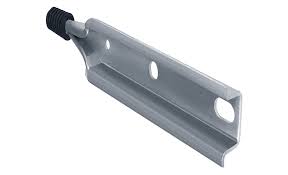
A pole top pin is a device used to support insulators and conductors on electrical systems. This helps to prevent the insulators from flowing down to the pole and provides electrical isolation. It is able to withstand mechanical loads and environmental stresses. This helps them to maintain the structural integrity of the transmission and distribution lines. A pole top pin is from materials such as metal, porcelain or composite materials. High quality pole top pins are able to withstand the diverse environmental conditions in South America. Common types of pole top pin include clevis pin, twist-lock pin, anchor pin, ball socket pin and wedge pin among others. They find use in applications such as insulator attachment, crossarm attachment, transformer support, telecommunication and distribution lines.
Key features of pole top pin
Pole top pins have various features that help them to secure insulators, conductors and other equipment to utility poles. These features ensure their effectiveness in securely attaching components to utility poles. The presence of the features depends on the intended use and environmental conditions. The following are the key features of the pole top pin.
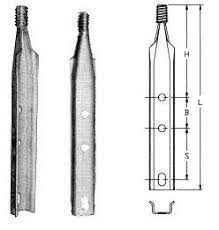
- Compatibility – pole top pin is compatible with various insulators, conductors and equipment used in electrical systems.
- Aesthetics – pole top pins blend with the overall aesthetics of the pole or surrounding environment.
- Threaded ends – the threaded end helps to provide a secure fit into the pole, crossarm or insulator enhancing stability.
- Corrosion resistance – pole top pins have coatings and materials that prevent corrosion to ensure longevity.
- High mechanical strength – pole top pins have an engineering to withstand mechanical loads. This helps to ensure the structural integrity of the pole and the safety of the electrical systems.
- Size and load capacity – they are available in different sizes and load capacities to accommodate different voltage levels.
- Conductor attachment – they help to support and secure electrical conductors. This helps to ensure proper spacing and alignment of the transmission and distribution lines.
- Material – they are from durable materials that help withstand corrosion and weather conditions. These materials include steel aluminum or composite materials.
- Insulator attachment – the pins help to securely attach insulators and provide electrical isolation. It also helps prevent electrical current from moving down the pole.
Selection and installation of pole top pin
The selection of pole top pin impacts the reliability and safety of the electrical systems. The process includes considering various factors that influence the choice of the pin. These factors include performance, material, type of application, size and dimensions and costs. The installation process should ensure the secure attachment of insulators, conductors and other equipment. The following is a basic installation process of the pole top pin.
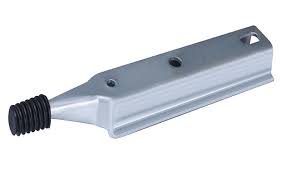
- Preparation – gather all the necessary tools required for the installation including pole top pins, wrenches, fasteners and safety gear.
- Prepare the work area – ensure the work area around the pole is clear of obstructions and hazards.
- Inspect the pole top pins – inspect the pins before the installation to ensure it is free of defects such as damage or corrosion.
- Position the pin – determine the exact location on the pole or crossarm where the pin will attach. Make sure the pin positions correctly to align with the insulators and conductors.
- Secure the pin – secure the pin in place using the suitable attachment method into the designated hole on the pole.
- Torque and tension – use a torque wrench to apply the recommended torque specifications by the manufacturer. This helps ensure a secure fit and prevent loosening over time.
- Attach equipment – attach the insulator and conductors as required for the specific application.
- Inspection – conduct a visual inspection of the installation to ensure proper alignment and no visible defects.
- Testing – perform electrical testing to confirm the integrity of the installation.
- Documentation – maintain detailed records of the installation. This is including the type of pole top pin used, installation date, torque settings and other adjustment.
Maintenance and inspection of pole top pin
Proper maintenance and inspection help to ensure the reliability and safe operation of electrical systems. It also helps to extend the life of the lifespan of the components and help prevent unexpected failures. The frequency of this varies depending on the environmental and weather conditions of the location. Also, it is advisable to perform professional maintenance and inspection to safety of the installation. The following is a basic guide for maintenance and inspection in South America.
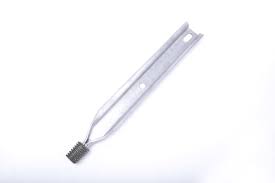
- Conduct routine inspections either annually or semi-annually depending on the environmental conditions.
- Visually inspect the pole top pins to check for signs of rust, corrosion or mechanical damage.
- Use a torque wrench to verify that they are properly torqued to the manufacturer’s specifications.
- Load testing helps to confirm the pins can withstand mechanical stresses and loads.
- Clean the surrounding of the pole top pins to prevent the accumulation of dirt, dust and contaminants.
- Apply lubrication as recommended to prevent galling and enhance the installation process.
- Replace any pole top pin found to be worn or damaged to avoid potential safety hazards and system failures.
- Apply protective coatings and use of corrosion-resistant materials to extend the lifespan of the pins.
- Maintain detailed records of all inspections including dates, findings and any actions taken. This helps to track the condition of the pole top pin over time.
Comparative analysis of pole top pin in South America
A comparative analysis helps utilities and organizations make informed decisions when selecting components. It involves assessing and evaluating the different brands and types of pins available in the market. This depends on the availability of local manufacturing and production of pole top pins. Additionally, the analysis is dependent on the specific needs of the application, voltage levels and environmental conditions in the region. The following are the key factors to include in the comparative analysis.
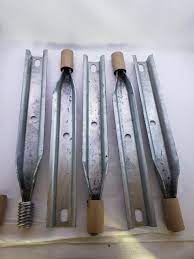
- Load capacity – compare the load-bearing capacity of different types of pole top pins. Consider the voltage level of the electrical system and mechanical loads to handle.
- Material – evaluate the materials used in the production of the pole top pins. Consider the durability, corrosion resistance and electrical conductivity of the materials.
- Attachment type – assess the various attachment mechanisms including threaded pins, clevis pins and twist lock pins.
- Costs – compare the costs of the types of pins available in the market. Consider the initial purchase price and long-term maintenance and replacement costs.
- Compatibility – confirm that the pole top pins are compatible with the insulators, conductors and equipment.
- Environmental resistance – assess the capacity of the pins to withstand South Americas diverse climates. These include coastal regions, highlands and rainforests.
- Local regulations – ensure the chosen pole top meets the specific regulations and standards of the south American country.
- Supplier network – consider the availability and accessibility of suppliers and manufacturers in South America.
- Installation and maintenance – evaluate the ease of installation and maintenance of the selected pole top pins.
Certifications and standards in South America
South America has various certifications and standards that govern the use of pole top pins. These standards help to ensure the quality, safety and performance. Additionally, each south American country has their specific standards and certifications. Other countries adopt to the international standards for pole top pins. The following are the common standards and certifications in South America.
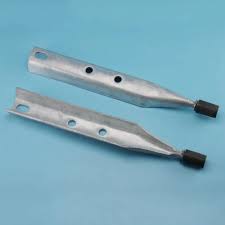
- ANSI standards – This provides standards related to electrical equipment to ensure their products meet safety and performance requirements.
- ASTM standards – These offer standards for materials and products used in a wide range of industries. They can help to evaluate the materials and construction of pole top pins.
- IEC standards – these are standards that cover aspects of electrical components and systems. This ensures international compatibility.
- ISO certifications – these certifications help manufacturers to confirm their quality and safety of the products.
- Local regulatory standards – each South African countries has their own national standards and regulations. These can include safety, performance and environmental standards to the region.
Regional standards for pole top pins in South America
There are various factors that influence the regional market for pole top pins in South America. Some of these factors include growing energy infrastructure, diverse climate conditions and regulatory environments. The following are the common factors that shape the regional market for pole top pin.
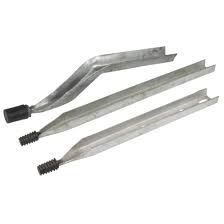
- Supplier competition – the availability of local manufacturers increases the competition between manufacturers. This impacts the availability and demand of pole top pins in the region.
- Infrastructure upgrade – replacing old pole top pins with newer and durable versions increase the demand.
- Coastal areas – coastal areas affect the products used in the area. They need to be corrosion-resistant and able to withstand the effects of saltwater.
- Diverse climate conditions – pole top pins must be able to withstand the diverse environmental conditions.
- High voltage and transmission projects – improving grid reliability and accommodating renewable energy sources lead to increased demand.
Frequently asked questions
What is a pole top pin and its role in overhead electrical systems?
A pole top pin is a component used in overhead electrical systems to secure insulators, conductors and other equipment. The main role is to provide electrical isolation and mechanical support.
What is the frequency of maintenance and inspection of pole top pins in South America?
The frequency of inspection and maintenance depends on environmental conditions and criticality of the installation. Inspection and maintenance may range from annually to semi-annually.
